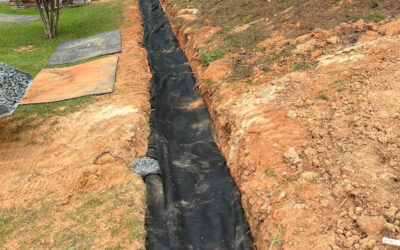How To Maintain Your Stormwater Pond Throughout the Year
Stormwater ponds aren’t set-it-and-forget-it features of your property. They’re complex systems that require different attention as seasons change.
Many property owners find themselves facing costly repairs or compliance violations simply because they don’t realize how maintenance needs shift throughout the year.
Why Is It Important To Maintain Your Stormwater Pond Year-Round
Many property owners ask us, “Can’t we just clean the pond once a year?” Unfortunately, this approach often leads to compliance issues, reduced functionality, and eventually, expensive rehabilitation projects.
Stormwater ponds face different challenges in different seasons, and a maintenance schedule that addresses these seasonal variations is essential for proper function and regulatory compliance.
When properly maintained year-round, your stormwater pond provides:
- Effective flood control
- Enhanced water quality
- Compliance with local regulations
- Protection from costly emergency repairs
- Aesthetically pleasing property features
Let’s explore what your pond needs in each season to remain functional and compliant.
Spring: Preparing for Growth and Heavy Rains
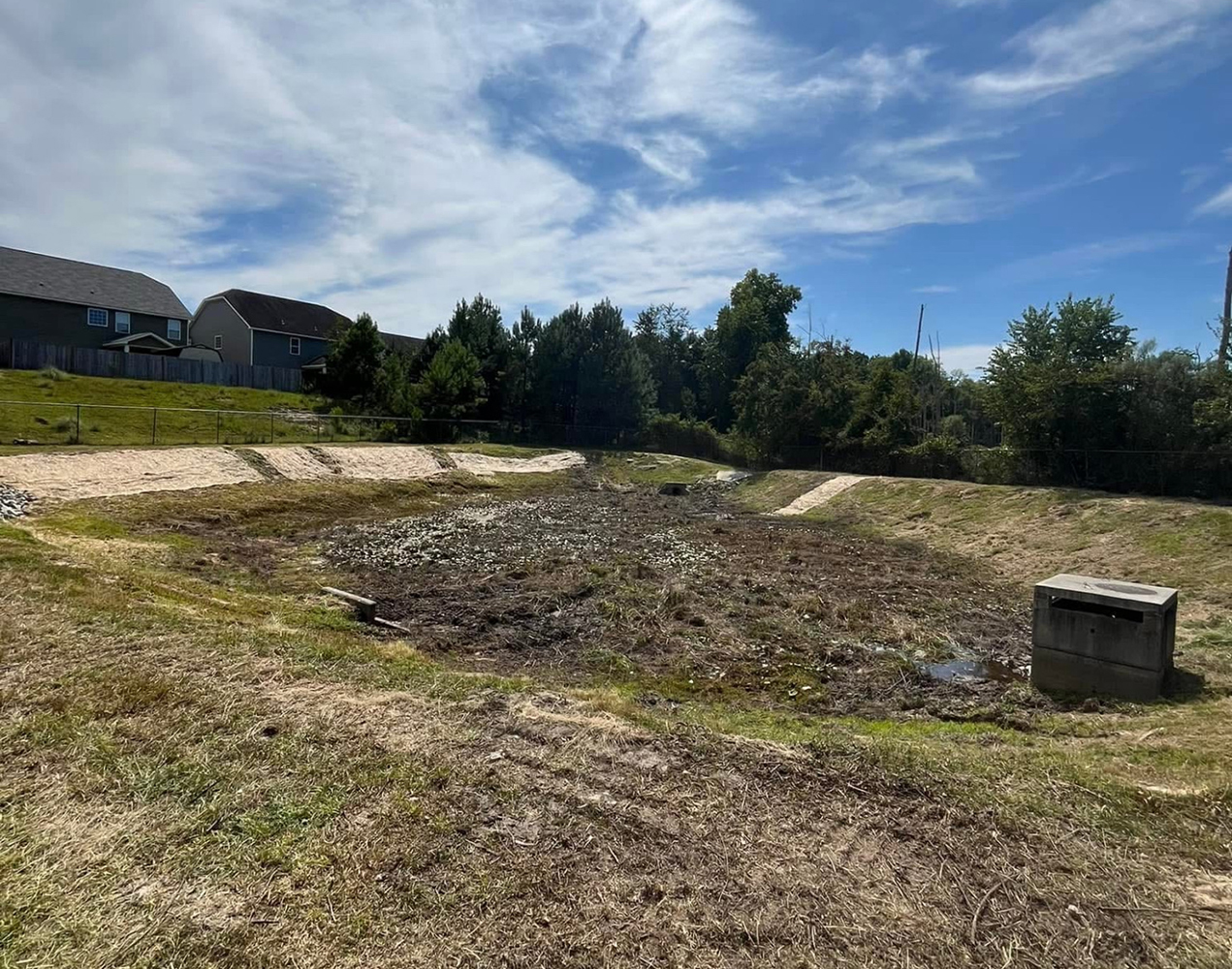
Spring brings increased rainfall and the beginning of the growing season, making it the most important time for stormwater maintenance.
Key Spring Maintenance Tasks:
Vegetation Management
- Remove winter debris that accumulated while the pond was dormant
- Begin mowing schedule for embankments and buffers
- Remove any new saplings or woody growth from embankments
- Monitor for invasive species that emerge in early spring
Structural Inspection
- Check inlet and outlet structures for winter damage
- Clear debris that could impede water flow during spring rains
- Evaluate erosion control measures after winter freeze-thaw cycles
- Inspect for rodent damage to embankments
Sediment Assessment
- Evaluate sediment accumulation after winter runoff
- Schedule sediment removal if buildup is approaching critical levels
Pro Tip: Spring is the ideal time for a professional inspection to identify any issues that developed over winter and prepare your pond for the high-demand seasons ahead.
Summer: Managing Aggressive Growth
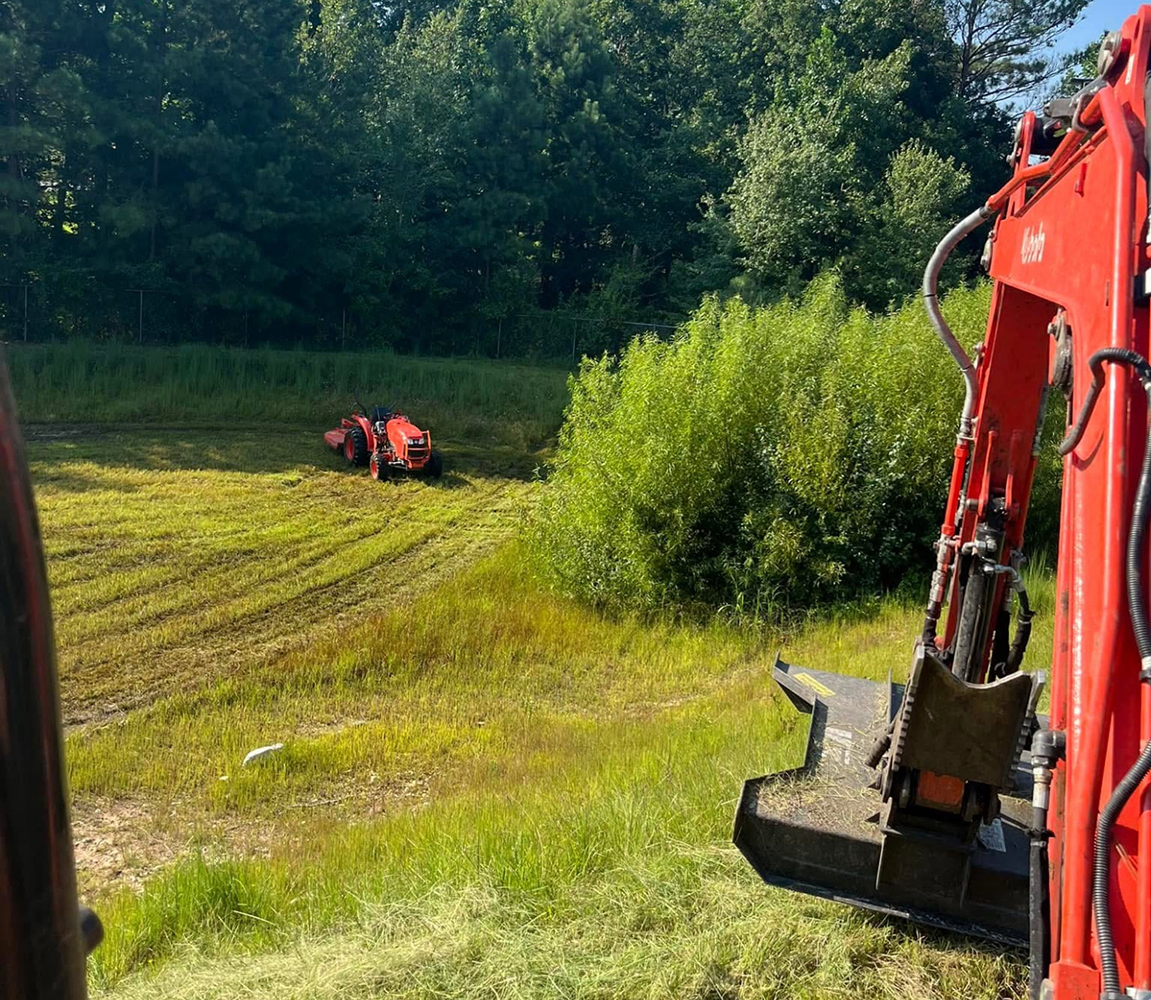
Summer brings rapid vegetation growth and potential algae issues that require diligent monitoring and maintenance.
Key Summer Maintenance Tasks:
Vegetation Control
- Implement regular mowing schedule for embankments (typically every 3-4 weeks)
- Control aquatic vegetation that may impede water flow
- Maintain buffer zones to filter incoming runoff
Water Quality Management
- Monitor for algae blooms during hot weather periods
- Address mosquito concerns through proper vegetation management
- Ensure proper aeration if your pond includes this feature
Preventative Maintenance
- Check for erosion problems, especially after summer storms
- Maintain access points for future maintenance needs
Case Study: An HOA in Columbia saved over $15,000 in emergency repairs by implementing a summer maintenance schedule that caught erosion issues early before they undermined their pond’s structural integrity.
Fall: Preparing for Leaf Litter and Seasonal Changes
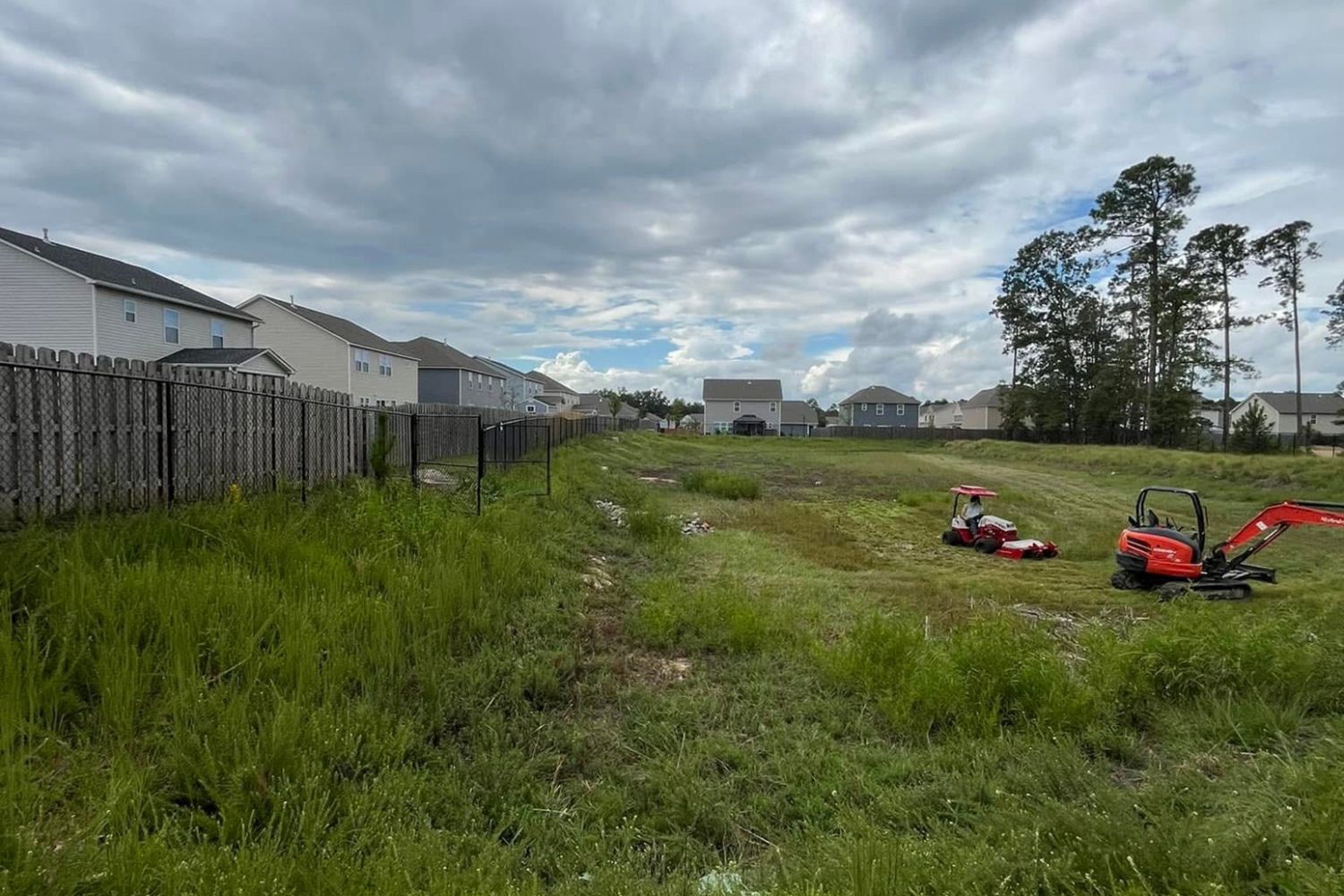
Fall presents unique challenges as deciduous trees shed leaves that can clog critical pond components.
Key Fall Maintenance Tasks:
Debris Management
-
Remove leaf litter from critical areas including:
-
Inlet structures
-
Outlet structures
-
Spillways
-
Control devices
Final Growth Control
-
Perform last mowing of the season before winter dormancy
-
Remove any woody vegetation that established during summer
-
Address any invasive species before winter dormancy makes them harder to identify
Pre-Winter Inspection
-
Ensure all structures are clear before winter precipitation
-
Check for and address any developing erosion issues
-
Document pond condition for winter comparison
Why It Matters: Fall maintenance prevents the “snowball effect” of problems that can occur when leaves and debris block critical structures, leading to winter backups and potential flooding during spring thaws.
Winter: Monitoring During Dormancy
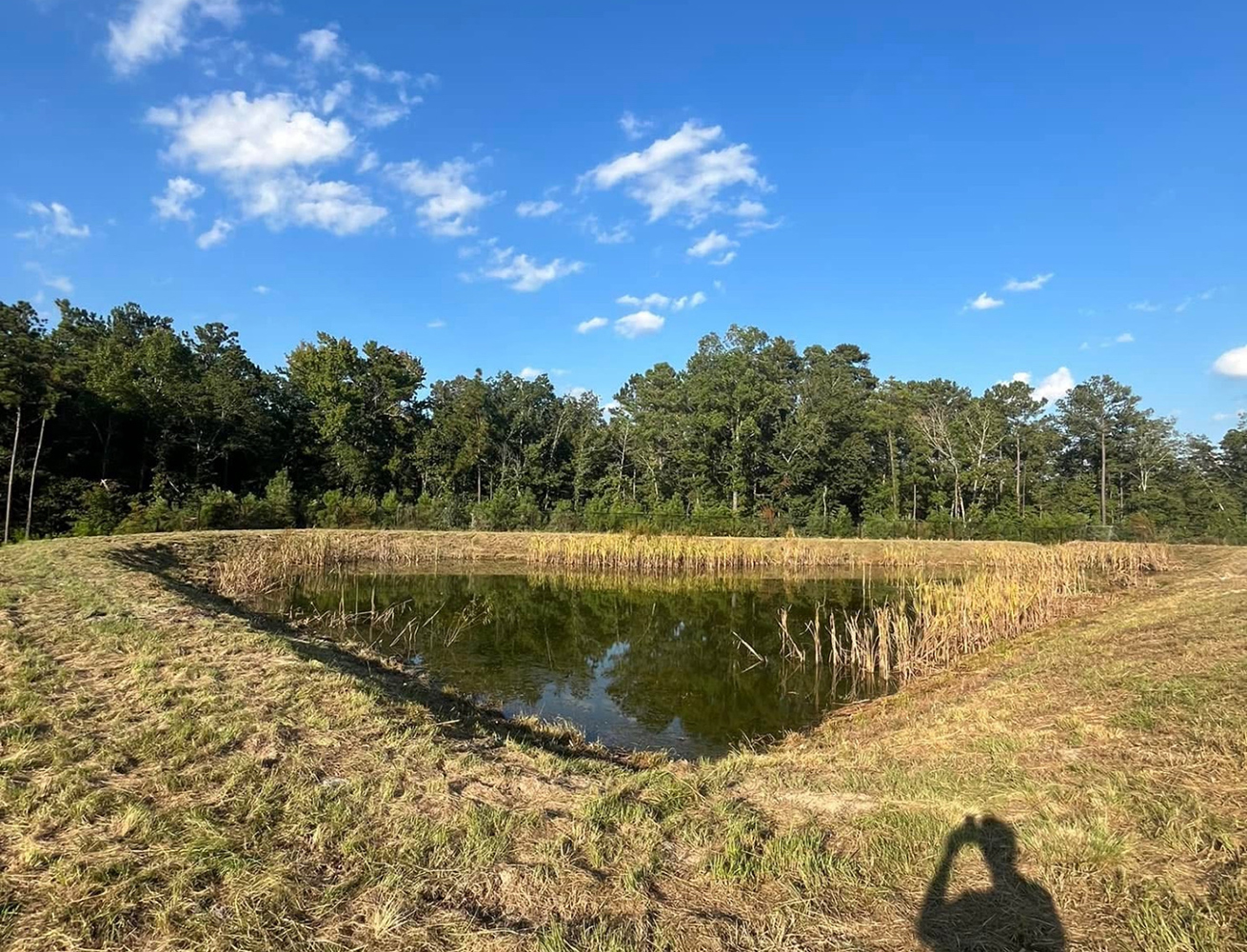
While growth slows in winter, monitoring remains important to catch structural issues.
Key Winter Maintenance Tasks:
Storm Response
- Check structures after significant precipitation events
- Remove debris from inlets and outlets
- Monitor for ice damage to structures
Planning Ahead
- Schedule any major maintenance or structural repairs for early spring
- Review compliance requirements for the coming year
- Develop maintenance budget and schedule for the upcoming seasons
Owner’s Tip: Many of our clients mistakenly think winter means no pond maintenance. In reality, winter inspection is critical for identifying structural issues that become much more expensive to fix if left until spring rains arrive.
How To Create Your Maintenance Calendar
Every stormwater pond has unique characteristics based on:
- Size and design
- Surrounding landscape
- Local vegetation patterns
- Regulatory requirements
- Watershed characteristics
Factors That Influence Maintenance Frequency:
|
Factor |
Impact on Maintenance |
|
Heavy tree coverage |
Increases fall debris removal needs |
|
Steep slopes |
Requires more frequent erosion inspections |
|
Large watershed |
May need more sediment management |
|
High visibility location |
May require additional aesthetic maintenance |
|
Regulatory oversight |
May require documentation and reporting |
The Cost of Seasonal Maintenance vs. Emergency Repairs
Many property managers and HOAs hesitate to implement comprehensive maintenance programs due to perceived costs. However, the numbers tell a compelling story:
Typical Annual Maintenance Costs:
- Quarterly professional inspections: $1,200-$2,400/year
- Regular mowing and vegetation control: $2,500-$5,000/year
- Minor structural repairs: $500-$1,500/year
Potential Emergency Repair Costs:
- Major erosion repair: $5,000-$15,000
- Structural failure remediation: $10,000-$30,000
- Complete pond rehabilitation: $25,000-$100,000+
- Regulatory fines: $500-$10,000 per violation
The investment in seasonal maintenance typically represents just 10-20% of what emergency repairs might cost.
How Ashworth Co. Makes Pond Maintenance Simple
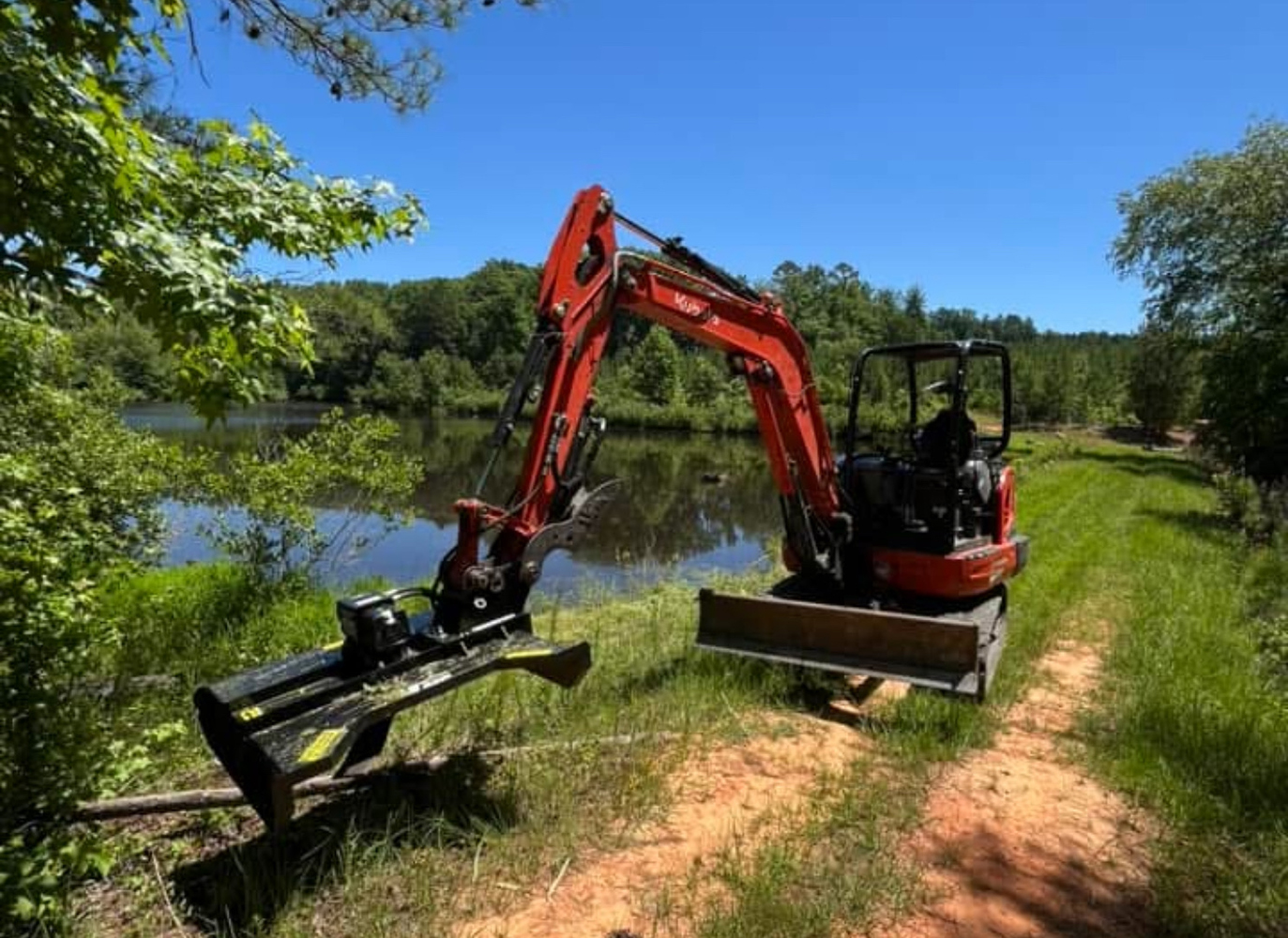
At Ashworth Co., we understand that property managers and HOAs have numerous responsibilities beyond stormwater management. That’s why we’ve developed comprehensive maintenance programs that:
- Spread costs throughout the year rather than requiring large lump-sum expenditures
- Provide detailed documentation for regulatory compliance
- Include regular reporting for HOA boards and property managers
- Identify potential issues before they become expensive problems
- Customize maintenance schedules to your specific pond’s needs
Don’t wait for the next seasonal challenge to impact your stormwater pond.
Contact Ashworth Co. today for a comprehensive pond assessment and customized maintenance plan that will protect your investment throughout every season.
Read more here:
7 Warning Signs Your Property Has Serious Drainage Issues (Before It’s Too Late)
Water problems don't announce themselves with flashing signs – they creep in slowly, causing...

